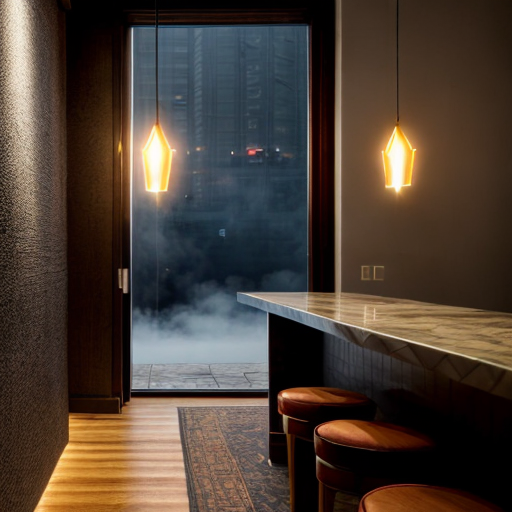Understanding the Key Factors in Restaurant Valuation
Understanding the key factors in restaurant valuation is crucial when determining the worth of a restaurant for sale. Factors such as location, concept, financial performance, and growth potential all play a significant role in determining the value of a restaurant. Location is a key factor as it can greatly impact foot traffic and overall revenue. The concept of the restaurant, including its menu, ambiance, and target market, also plays a crucial role in valuation. Additionally, analyzing the financial performance of the restaurant, including revenue, expenses, and profit margins, is essential in determining its value. Finally, considering the growth potential of the restaurant, such as opportunities for expansion or improvements, is important in accurately valuing a restaurant for sale.
Evaluating Financial Performance and Profitability Metrics
An interesting fact about valuing a restaurant for sale is that the location of the restaurant can significantly impact its value. A restaurant situated in a prime location, such as a busy downtown area or a popular tourist destination, is likely to have higher value compared to one located in a less desirable or remote area. The accessibility, visibility, and foot traffic potential of a restaurant's location can greatly influence its profitability and, consequently, its overall value in the market.
Evaluating the financial performance and profitability metrics of a restaurant is essential in determining its value for sale. Key metrics to consider include revenue growth, profit margins, and cash flow. Analyzing revenue growth over time can indicate the restaurant's ability to attract and retain customers. Profit margins, such as gross profit margin and net profit margin, provide insight into the restaurant's efficiency and profitability. Additionally, assessing cash flow, including operating cash flow and free cash flow, can help determine the restaurant's ability to generate and manage cash. By evaluating these financial performance and profitability metrics, potential buyers can make informed decisions when valuing a restaurant for sale.
Assessing Tangible and Intangible Assets in Restaurant Valuation

Assessing both tangible and intangible assets is a critical aspect of restaurant valuation when determining its worth for sale. Tangible assets include physical items such as equipment, furniture, and real estate. These assets can directly impact the value of a restaurant as they contribute to its operational capabilities and overall worth. Evaluating the condition and value of tangible assets is essential in accurately assessing the restaurant's value, as well as considering any potential depreciation or maintenance costs associated with these assets.
In addition to tangible assets, intangible assets also play a significant role in restaurant valuation. Intangible assets include factors such as brand reputation, customer loyalty, and intellectual property. These assets can greatly influence the perceived value of a restaurant and its potential for future success. Assessing intangible assets requires a thorough analysis of the restaurant's brand recognition, customer reviews, and unique offerings that set it apart from competitors. Understanding the value of intangible assets is crucial in determining the overall value of a restaurant for sale.
When assessing tangible and intangible assets in restaurant valuation, it is important to consider how these assets contribute to the restaurant's competitive advantage and long-term sustainability. Tangible assets like state-of-the-art kitchen equipment or a prime location can enhance operational efficiency and attract customers, ultimately increasing the restaurant's value. Intangible assets such as a strong brand reputation or loyal customer base can drive revenue growth and differentiate the restaurant in a competitive market. By carefully evaluating both tangible and intangible assets, potential buyers can gain a comprehensive understanding of the restaurant's value and potential for success in the future.
Furthermore, assessing tangible and intangible assets in restaurant valuation requires a holistic approach that considers both quantitative and qualitative factors. Quantitative analysis involves evaluating the financial impact of tangible assets on the restaurant's profitability and cash flow, as well as estimating the value of intangible assets based on market trends and industry benchmarks. Qualitative analysis, on the other hand, involves assessing the subjective value of intangible assets such as brand reputation and customer loyalty, which may not be easily quantifiable but are nonetheless crucial in determining the overall value of the restaurant. By combining both quantitative and qualitative assessments of tangible and intangible assets, potential buyers can make informed decisions when valuing a restaurant for sale and negotiating a fair price that reflects its true worth.
Considering Market Conditions and Comparable Sales in Restaurant Valuation
Fun fact: When valuing a restaurant for sale, one common method used is the 'Rule of Thumb' approach. This approach suggests that a restaurant's value can be estimated by multiplying its annual sales by a certain factor, typically ranging from 0.25 to 0.75. So, if a restaurant has annual sales of $500,000 and a factor of 0.5 is applied, the estimated value would be $250,000. However, it's important to note that this method is just a rough estimate and should be used in conjunction with other valuation techniques for a more accurate assessment.
Considering market conditions and comparable sales is essential in restaurant valuation when determining the appropriate price for a restaurant sale. Market conditions, such as trends in the restaurant industry, local economic factors, and consumer preferences, can impact the value of a restaurant. Analyzing comparable sales of similar restaurants in the area can provide valuable insights into market pricing and help establish a competitive asking price for the restaurant. By taking into account market conditions and comparable sales data, potential buyers can ensure that the restaurant is priced accurately and competitively in the current market environment.

